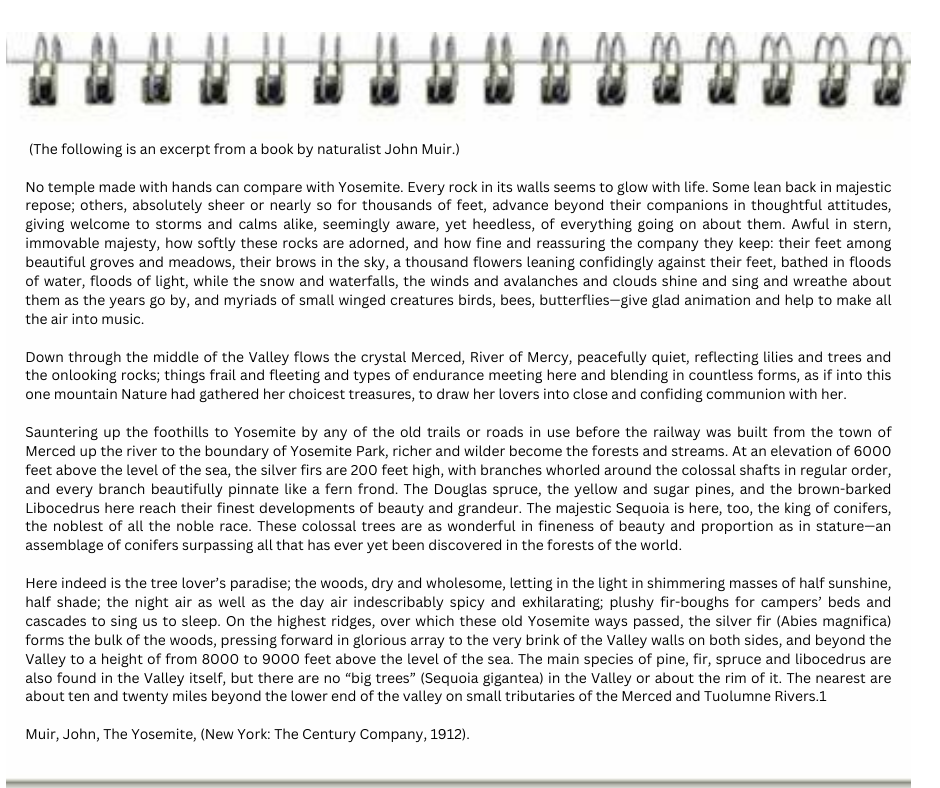
Explanation:
No man-made temple can match the majesty and nearly religious experience that Muir's word choice conjures.
Explanation:
Yosemite is directly compared to a temple by Muir, as is evident from the opening statement. Although he talks about the trees in Yosemite, the main philosophical point is that the park has a holy quality to it, much like a temple or other religious building.
Explanation:
The third paragraph states that one must drive "from the town of Merced up the river to the boundary of Yosemite Park," which implies that Merced is outside of Yosemite.
Explanation:
After detailing various large trees that exist on the outside of the Valley for two paragraphs, such as the Douglas spruce and the "majestic Sequoia," the author claims that there are no "giant trees" in the setting. More likely, the author implies that although there are trees in the Valley, they are not as "large" as the ones previously mentioned.
Explanation:
"The primary species of pine, fir, spruce, and Libocedrus are also found in the Valley itself," the final sentence reads. Only the maple tree is absent from the paragraph among the answer options.
Explanation:
No temple created by human hands can compare to Yosemite, according to the thesis statement in the first paragraph. The discussion of what makes Yosemite unique and amazing then starts. The second paragraph builds on that idea by talking about the River Merced and how it enhances Yosemite's grandeur and beauty.
Explanation:
The passage makes no mention of Yosemite having a dry, desert landscape in any of its regions. The passage frequently mentions a lush environment. Despite mentioning "faces of naked granite" at one point, Muir is probably referring to the mountain sides rather than a desert region.